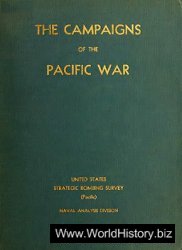The acquisition of Spanish Florida and the settlement of the western boundary of Louisiana were also accomplished as an aftermath of the War of 1812, but in a far different spirit. Spain’s control of the Floridas was feeble. West Florida had passed into American hands by 1813, and frontiersmen in Georgia were eyeing East Florida greedily. Indians struck frequently into Georgia from Florida, then fled to sanctuary across the line. American slaves who escaped across the border could not be recovered. In 1818 James Monroe, who had been elected president in 1816, ordered General Andrew Jackson to clear raiding Seminole Indians from American soil and to pursue them into Florida if necessary. Seizing on these instructions, Jackson marched into Florida and easily captured two Spanish forts.
Although Jackson eventually withdrew from Florida, the impotence of the Spanish government made it obvious even in Madrid that if nothing were done, the United States would soon fill the power vacuum by seizing the territory. The Spanish also feared for the future of their tottering Latin American empire, especially the northern provinces of Mexico, which stood in the path of American westward expansion. Spain and the United States had never determined where the Louisiana Territory ended and Spanish Mexico began. In return for American acceptance of a boundary as far east of the Rio Grande as possible, Spain was ready to surrender Florida.
For these reasons the Spanish minister in Washington, Luis de Onis, set out in December 1817 to negotiate a treaty with John Quincy Adams, Monroe’s secretary of state. Adams pressed the minister mercilessly on the question of the western boundary, driving a bargain that would have done credit to the most tightfisted of his Yankee ancestors. Onis opened their talks by proposing a line in the middle of what is now Louisiana, and when Adams countered by demanding a boundary running through present-day Texas, Onis professed to be shocked. Abstract right, not power, should determine the settlement, he said: “Truth is of all times, and reason and justice are founded upon immutable principles.” To this Adams replied, “That truth is of all times and that reason and justice are founded upon immutable principles has never been contested by the United States, but neither truth, reason, nor justice consists in stubbornness of assertion, nor in the multiplied repetition of error.”
In the end Onis could only yield. He saved Texas for his monarch but accepted a boundary to the Louisiana Territory that followed the Sabine, Red, and Arkansas Rivers to the Continental Divide and the forty-second parallel to the Pacific, thus abandoning Spain’s claim to a huge area beyond the Rockies that had no connection at all with the Louisiana Purchase. Adams even compelled him to agree that when the boundary followed rivers, United States territory was to extend to the farthest bank, not merely to midstream. The United States obtained Florida in return for a mere $5 million, and that money was not paid to Spain but to Americans who held claims against the Spanish government.
This Transcontinental Treaty was signed in 1819, although ratification was delayed until 1821. Most Americans at the time thought the acquisition of Florida the most important part of the treaty, but Adams, whose vision of America’s future was truly continental, knew better. “The acquisition of a definite line of boundary to the [Pacific] forms a great epoch in our history,” he recorded in his diary.




 World History
World History









